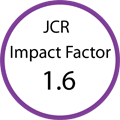Autologous Stromal Vascular Fraction in the Intravenous Treatment of End-Stage Chronic Obstructive Pulmonary Disease: A Phase I Trial of Safety and Tolerability
Abstract
Background: Chronic obstructive pulmonary disease (COPD) is a consistently progressive, ultimately fatal disease for which no treatment exists capable of either reversing or even interrupting its course. It afflicts more than 5% of the population in many countries, and it accordingly represents the third most frequent cause of death in the US, where it accounts for more than 600 billion in health care costs, morbidity, and mortality. Adipose tissue contains within its stromal compartment a high abundance of adipose stem/stromal cells (ASCs), which can be readily separated from the adipocyte population by methods which require less than 2 h of processing time and yield a concentrated cellular preparation termed the stromal vascular fraction (SVF). The SVF contains all cellular elements of fat, excluding adipocytes. Recent clinical studies have begun to explore the feasibility and safety of the local injection or intravascular delivery of SVF or more purified populations of ASCs derived by culture protocols. Several pre-clinical studies have demonstrated a remarkable ability of ASC to nearly fully ameliorate the progress of emphysema due to cigarette smoke exposure as well as other causes. However, no prior clinical studies have evaluated the safety of administration of either ASC or SVF in subjects with COPD. We hypothesized that harvest, isolation, and immediate intravenous infusion of autologous SVF would be feasible and safe in subjects with COPD; and that such an approach, if ultimately determined to be efficacious as well as safe, would provide a highly practical method for treatment of COPD.
Methods: In this study, an initial phase I trial evaluating the early and delayed safety of SVF infusion was performed. Twelve subjects were enrolled in the study, in which adipose tissue was harvested using standard liposuction techniques, followed by SVF isolation and intravenous infusion of 150 - 300 million cells. Standardized questionnaires were administered to study feasibility as well as immediate and delayed outcomes and adverse events as primary endpoints. Secondary endpoints included subjective wellness and attitudes towards the procedure, as well as willingness to undergo the procedure a second time. The follow-up time ranged from 3 to 12 months, averaging 12 months.
Results: Of the 12 subjects, only one experienced an immediate adverse event, related to bruising from the liposuction. No observed pulmonary or cardiac issues were observed as related to the procedure. There were no deaths over the 12-month study period, and none identified in the subsequent telephonic follow-up. Attitudes toward the procedure were predominantly positive, and 92% of the study subjects expressed a desire to undergo the procedure a second time.
Conclusions: This study is the first to demonstrate safety of SVF infusion in humans with serious pulmonary disease. Specifically, the use of intravenous infusion as a route to achieve pulmonary cellular targeting did not lead to clinical pulmonary compromise. The intravenous administration of SVF should be further explored as a potentially feasible and safe method for delivery leading to possible therapeutic benefit.
J Clin Med Res. 2017;9(8):701-708
doi: https://doi.org/10.14740/jocmr3072w




